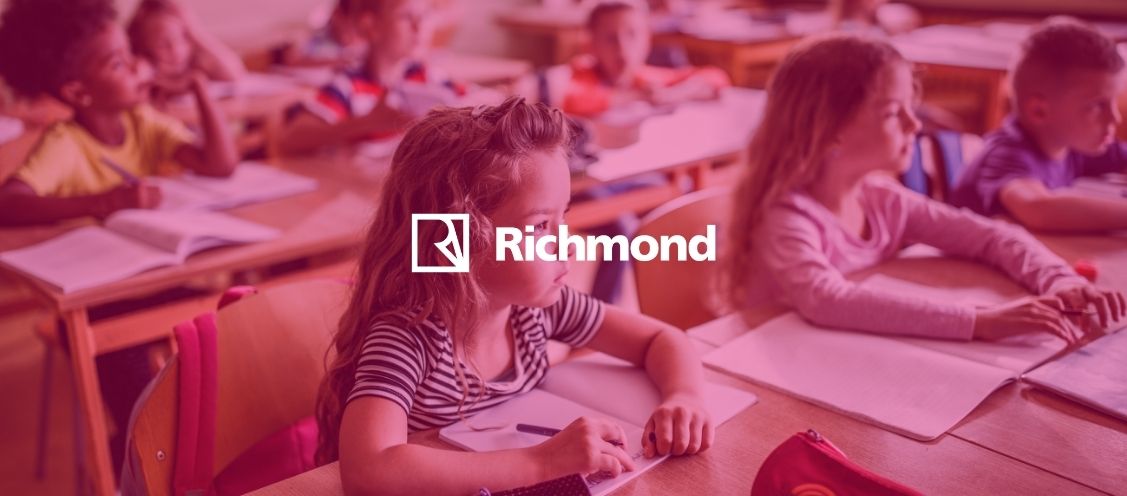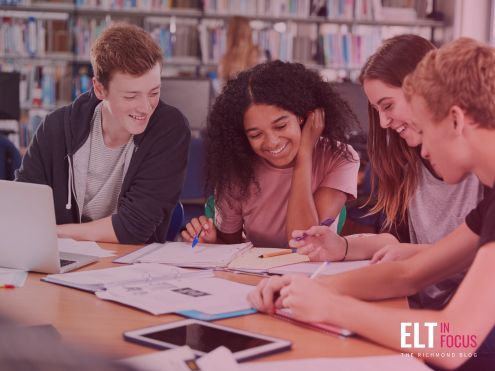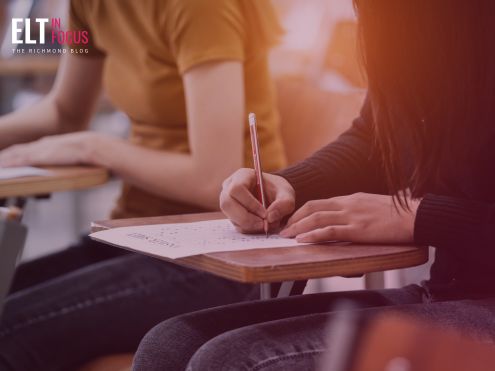We are living in an age of hothouse education . Facts, theories and mindsets are crammed into students’ heads and often one class blurs into another. Many students switch off in this sub-optimal situation. The challenge for the teacher is to make his or her class stand out in the blur . How can you capture your students’ attention right at the beginning of the class? How can you jolt them out of their apathy?
An Image Provokes a Thousand Words
The answer is to present them with something unexpected. The most obvious way of doing this is to start the class with a surprising image. It may be ridiculous, shocking, counterintuitive or simply require interpretation. However, an image puts all sighted people on a level playing field (and you can have sighted students describe the image they are seeing); initially, no language skill is necessary to react to an image. A question such as, “What’s happening?” will get the students to integrate the image into a story, i.e. to think creatively. Encourage them to use hedging vocabulary (‘probably’, “It may be...”, etc.) as they express what they are seeing and inferring. A picture is also a good place to challenge monolithic thinking as you should get widely differing interpretations of most interesting images.
Ideally, the image should be related to the topic that the students are going to confront in class but even an unrelated picture will break the monotony of one class after another.
Of course, it is much easier and eco-friendly to use a picture in this way if you have a computer and projector in class and it is always useful to be aware of posters on sale as art works and iconic photos which can also make great conversation starters. Printed maps are another visual add that can be stimulating.
Mystery Pictures
A further twist on the image theme is to start the class with only a small section of a picture visible or with a pixelated version of the picture – with the challenge to guess what it is. Playing around with pictures can be very intellectually stimulating for students. For instance, show them a horizontally flipped version of The Mona Lisa. Then ask they why it looks wrong (the countryside in the background doesn’t match up but we don’t notice this when we are looking at the familiar projection of the image).
Video on Demand
Similarly, if you have an internet connection to your class computer and projector, a short video can introduce a topic well. Remember that you have the option of subtitles (CC) and/or slowing down the recording to 75% speed on most YouTube videos. Check beforehand that the subtitles are reasonably accurate, and whether slowing down the recording makes it easier to understand or not.
Audio Intros
In theory, you could start the class with a podcast. In practice this is likely to need pre-listening scaffolding and would be better placed in the main part of the lesson. However, not all audio recordings are of human speech. The recording of an unfamiliar sound can spark the students’ curiosity. I remember one class that started with the frequencies emitted by the different planets in our solar system converted into sound. But anything from whale song or birdsong to the sound of an unfamiliar machine can get students engaged and attentive.
Another option is music. Documentary makers typically transport us to the appropriate time and place using associative music, so why shouldn’t you. Music can also be used to calm an overexcited class or energize a lethargic one. Moreover, music is always an opportunity to get students to express how they feel.
Again, if you are using sounds to introduce the class, ideally they should be appropriate to the lesson in hand but they don’t have to be.
Engaging the Minor Senses
As a species we tend to focus primarily on only two of our five senses. It can be very effective to start a class by appealing to students’ minor senses. For instance, an Anglo foodstuff that is not available in the country where the students are studying can be very stimulating. Don’t let them know what it is beforehand; you could ask them to close their eyes and place the foodstuff in their hand, for instance. Of course, if it is not easily recognizable, you could just give it to them to taste. Make sure they don’t see any packaging though. While this is highly stimulating make sure you know beforehand about any allergies (e.g. gluten intolerance) or dietary restrictions (e.g. veganism, vegetarianism, kosher, halal) or you could get in a lot of trouble.
Smell is a safer option, though perhaps more difficult to link to specific topics. For example, I have a bottle of raspberry-scented liquid soap . When you see the container with its pictures of raspberries combined with the colour of the gel, you definitely think of that particular fruit as you smell it. However, if you only smell the product without seeing it or its container, it is much more difficult to identify the familiar smell. Learning how we create an overall perception of food from its appearance, taste, smell and texture can be very revealing for students.
The last sense – touch – takes us into the realms of realia. Physical objects that the students can handle can be highly stimulating, especially if they are unfamiliar. Make sure you use objects that are difficult to break and have little sentimental value to you. You can increase expectation by covering the object before the students enter so that it is an enigma. Where appropriate, you could even get them to guess what it is before uncovering it.









